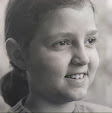Charles Thompson is an editorial and art photographer whose work has appeared in L’Officiel, Vogue, Esquire, Elle Décor, Town & Country, The New York Times, and elsewhere. He began his career in photography at Colors Magazine, the influential anthropology and photography magazine published by Benetton, where he was executive editor. He lives between New York and Moscow with his wife Olya, a Russian native, and their four children. This is his first exhibit in Russia.
“The first time I read of the mythical half-bird/half-woman creatures, Sirin and Alconost, was in a book about pre-revolutionary Russian traditions and costumes. The author described magical beings with bird bodies and human heads that could metamorphose into human female forms at will. They had been popular motifs in peasant lace and embrodery designs, wood carving and 16th Century Lubok prints. Pagan mythology held that their song was so mezmerizing that men would follow the birds to the end of the earth only to succumb to utter exhaustion. Later, Orthodox tradition had dealt with the popular winged female figures by rebranding them as symbols of the Holy Spirit—the birds were from Paradise where their songs “delight the blest.” Viktor Mikhailovich Vasnetsov painted Sirin and Alconost in his 1896 work, The Song of Joy and Sorrow, adding yet another layer of meaning to the magical beings. As the legend metamorphoses through history at the will of contemporary society, the mystical power to transfigure of the wondrous creatures remains.
To me the myth of Sirin and Alconost encapsulates the yearning to escape our human limitations and enter the realm of pure power, beauty and infinite possibility. While they are obviously also symbols of female power, beauty and intelligence, Sirin and Alconost stand for something more universal. This desire to metamorphosize and transform oneself into something extraordinary is perhaps shared by all humanity, but to me, in Russian culture, and especially in ballet, it is in a particularly raw form. The ballerinas featured in these images are captured at that very moment of transformation, where bird wings have yet to appear, yet the human body has already achieved flight. The images capture that crucial moment in between two worlds, the human and the super human, much like Eadweard Muybridge in 1877 captured the exact moment when a horse at full gallop is actually flying, with no hooves touching the ground. Pinned by the light like butterflies in a collection, the flying female figures twist and turn and burst with pure energy and infinite potential.”


No hay comentarios:
Publicar un comentario